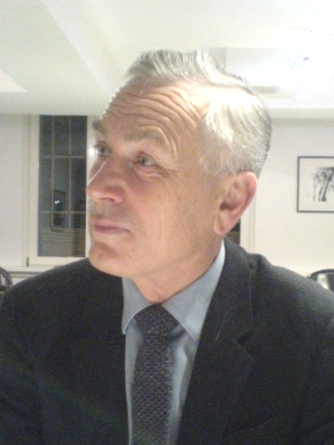
Prof. emer. Dieter W. Pohl
Lecturer at the University of Basel 1998-2008
Titular Professor at the University of Basel 2002-2008
Department of Physics
University of Basel
Klingelbergstrasse 82
4056 Basel, Switzerland
Short Biography
Born 1938, I studied at the Technical Universities of Stuttgart (1958-1964) and of München (TUM, 1964-1968). My diploma and PhD theses were concerned with the just invented (1960) laser [1 - 9]. The fascination of its ‘clean’ and powerful light gave the direction for my professional life.
I joined the laser group at IBM Zurich Research Laboratory (Rüschlikon) in 1968, studying primarily light scattering and nonlinear processes [10-43]. My research activities were interrupted by an assignment to the Director of Research’s staff in Yorktown Heights, N.Y. in 1979/80 which imparted to me valuable insight into the management of a large research organization. The experience helped me later in my function as a group leader in the Rüschlikon physics department and as member of several advisory boards.
After return, the interaction of light with nanometer-size objects came into focus. It emerged from my occupation with the just invented STM which resulted in several STM-[51-58], AFM- [59-62] and instrumental [63-67] investigations. In 1982-1984 we demonstrated the first near-field optical (NFO) microscope [68-70]. It breaks the diffraction barrier of optical microscopy, known as Abbé’s resolution limit (~λ/2) by at least a factor of 10. In the following years, NFO microscopy was further explored at IBM [71-105], in particular its relation with surface plasmon polaritons (‘plasmonics’). In 1992, I organized together with D. Courjon (U Besancon, France) a workshop on “Near Field Optics” (NFO) that became the mother of the international biennial NFO conference series.
In 1998, I moved to the University of Basel where I became a Titular Professor in 2002. My group participated in the growing field of plasmonics research (comprising NFO)[106-118]. A breakthrough demonstration of optical antenna effects and their nonlinear optical sequelae was the last result before my retirement in 2007/2008 [113,114]. A by-product of this development was the investigation of an ion-conducting glass [110,115] which can be used, among others, as a field emission gun for Ag+ ions [116].
I retired 2007/08 but still keep some contacts with the community of NFO – plasmonics – photonics, in particular with the groups in Switzerland.
Publications and Patents
- ~ 121 publications (see below)
- ~ 20 patents, mostly on scanning probe microscopy, micromechanics, storage
+ diverse publications in the IBM Technical Disclosure Bulletin
A complete list of the publications can be downloaded here.
Four relevant publications from my time at the University of Basel are
- Near field optics seen as an antenna problem
D. W. Pohl, in Near-Field Optics: Principles and Applications / The Second Asia-Pacific Workshop on Near Field Optics, Beijing, China October 20 -23, 1999, EDITOR M. Ohtsu and X. Zhu, (World Scientific, ISBN 981-02-4365-0, Singapore,p.9 - 21), 2000 - [111]* - Resonant Optical Antennas
P. Muehlschlegel, H.-J. Eisler, O.J.F. Martin, B. Hecht and D.W. Pohl,
Science 308, 1607 (2005) - [113]* - Single Quantum Dot Coupled to a Scanning Optical Antenna: A Tunable Superemitter
J.N. Farahani, D. W. Pohl, H.-J. Eisler and B. Hecht,
Phys. Rev. Lett. 95, 017402 (2005) - [114]* - Vacuum ion emission from solid electrolytes: An alternative source for focused ion beams
C. Escher, S. Thomann, C. Andreoli, H.-W. Fink, J. Toquant and D. W. Pohl,
Appl. Phys. Lett. 89, 053513 (2006) - [116]*
*Numbers refer to the complete list of publications.
Awards and Honors
- 1996 Carl-Zeiss Research Award
- 1997 Rank Prize for Electro-Optics
- 1999 Humboldt Research Prize
- 1968-1998 various IBM internal awards
- 2013 Stern-Gerlach Medal of the German Physical Society
Memberships
- Swiss Physical Society
- German Physical Society
